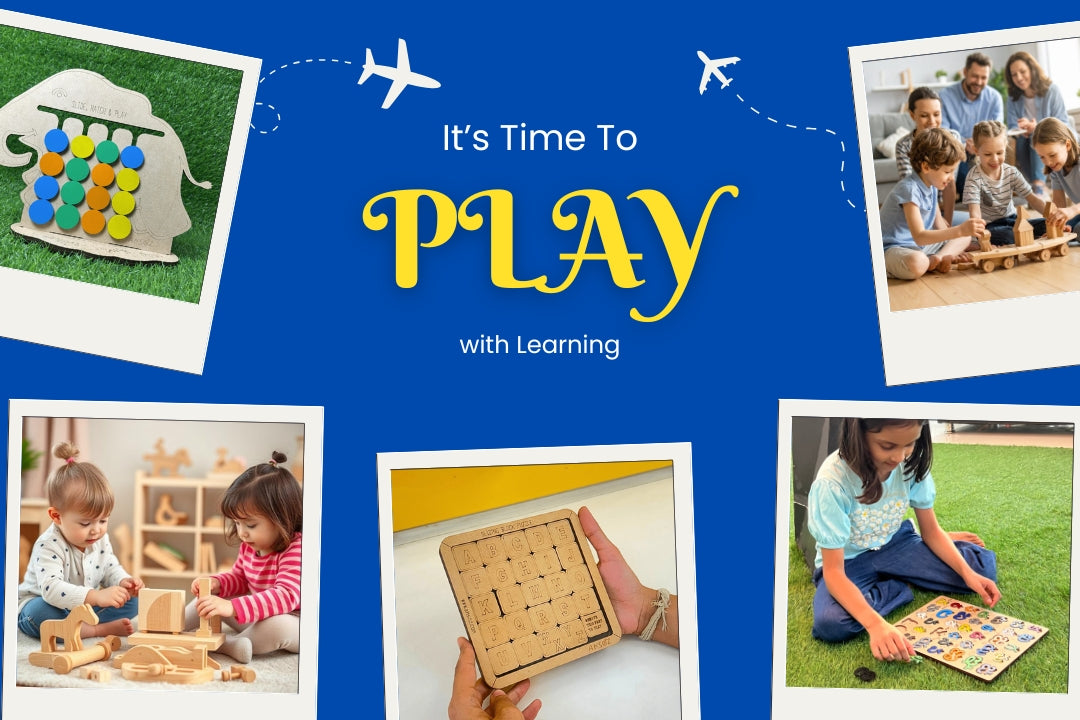
Play, Learn, Repeat: Why Every Kid Needs Smart Play Equipment
Ansoz Creations🎈 Unlocking Learning Through Play: The Power of Play Material & Equipment for Kids
It seems a challenge in the modern high-tech world to refer to the means of attracting children to participate in beneficial training exercises. However, there is one proven effective way that never fails, play. By choosing the right playing items and childrens play equipment, parents and educators can create rich, hands-on learning experiences that support early childhood development.
Play does not only aim at killing time. It is not about coming up with pure creativity and developing problem-solving and emotional intelligence. Let’s dive deeper into how thoughtfully designed play material can educate while entertaining—and why every child needs it.
🧠 Why playing is the initial part of learning
The world is already making sense to a child in play long before a child learns to read and write. Their cognitive and motor ability is also being developed, and their conscious mind does not even notice it when they are building blocks, rolling a toy car or solving a puzzle.
This early stage is when curiosity is at its peak—and the best way to channel that curiosity is through purposeful play material that combines fun with learning. The right playing items not only keep them engaged but also encourage critical thinking, memory-building, and imaginative exploration.
Colourful alphabet puzzle or a basic product that allows a kid to learn what a kitchen set or a do-at-home science kit is, all this becomes a building block to their life-long learning.
🪀 Choosing the Right Playing Items for Every Age Group
The age-appropriateness is probably one of the most significant things that should be considered. Every stage of development requires different types of stimulation, so choosing the right childrens play equipment makes a big difference in how effectively your child learns.
Toddlers (13 years): In this case it is important to utilize sensory stimulation. Choose play material that they can touch, shake, and explore—like stacking cups, musical instruments, and shape sorters. These toys assist in development of coordination, object recognition and early language.
Preschoolers (3-5 years): At this age, it is all about telling stories, inquisitiveness, and communicating. Pretend play things (doctor kits, grocery sets), large thing puzzles, and the alphabet boards are outstanding. They promote the growth of the language, thinking and expressing emotions.
Early School-Aged Kids (6 8 years): At this age the children respond well to more customized education games. They are kept socially stimulated and probed by STEM kits, building blocks, math puzzles, and board games, and find them rewarding and challenging.
Older Kids (8+ years): Older children can handle complex, goal-driven playing items like robotics kits, creative DIY sets, coding games, or strategy-based board games. These tools fine tune thinking, planning and problem solving.
🌈 Play Equipment- Educational Benefits You May Not Know
Cognitive Development: Childrens play equipment like puzzles, pattern games, and construction toys helps strengthen memory, attention span, and reasoning ability.
Emotional Development: Emotional Intelligence is also important as academic achievement. With the use of pretend-play and role-playing sets, children learn to experience a variety of feelings, develop understanding and learn to control their emotions.
Social skills: Turn-taking, sharing, cooperating, or working as a team, all are aspects of social skills that are taught by play. With the right play material, children naturally learn patience, negotiation, and teamwork.
Language & Communication: Many playing items, especially those involving storytelling or character roleplay, help children expand vocabulary, sentence structure, and conversational skills.
🧩 Must-Have Play Material for a Learning-Focused Playroom
Wondering what kind of playing items are worth adding to your child’s collection? And the following are some of the best to choose which are both fun and educative:
- Alphabet and number wooden puzzles
- Montessori -style sort and stack kits
- Science experiment kits and DIY craft boxes
- Balance boards and interactive indoor childrens play equipment
Creative thinking video flashcards and story cubes
Maintaining an assortment that is adequate of these in the play space of your child, you will make the child learn each day by discovery.
🎯 Final Thoughts: Learning Can Be Fun—If You Let It Be
The beauty of play lies in its simplicity. When kids are given access to high-quality playing items and childrens play equipment, they don’t just pass time—they grow. They build language, strengthen focus, develop empathy, and prepare for school and life ahead.
As a parent, teacher, or caregiver, your role is to guide—not control—the learning journey. And that starts by providing enriching play material that makes every moment count.
So next time you’re choosing toys, skip the flashy distractions. Instead, go for something that sparks curiosity, inspires action, and supports your child’s learning journey through the magic of play.




